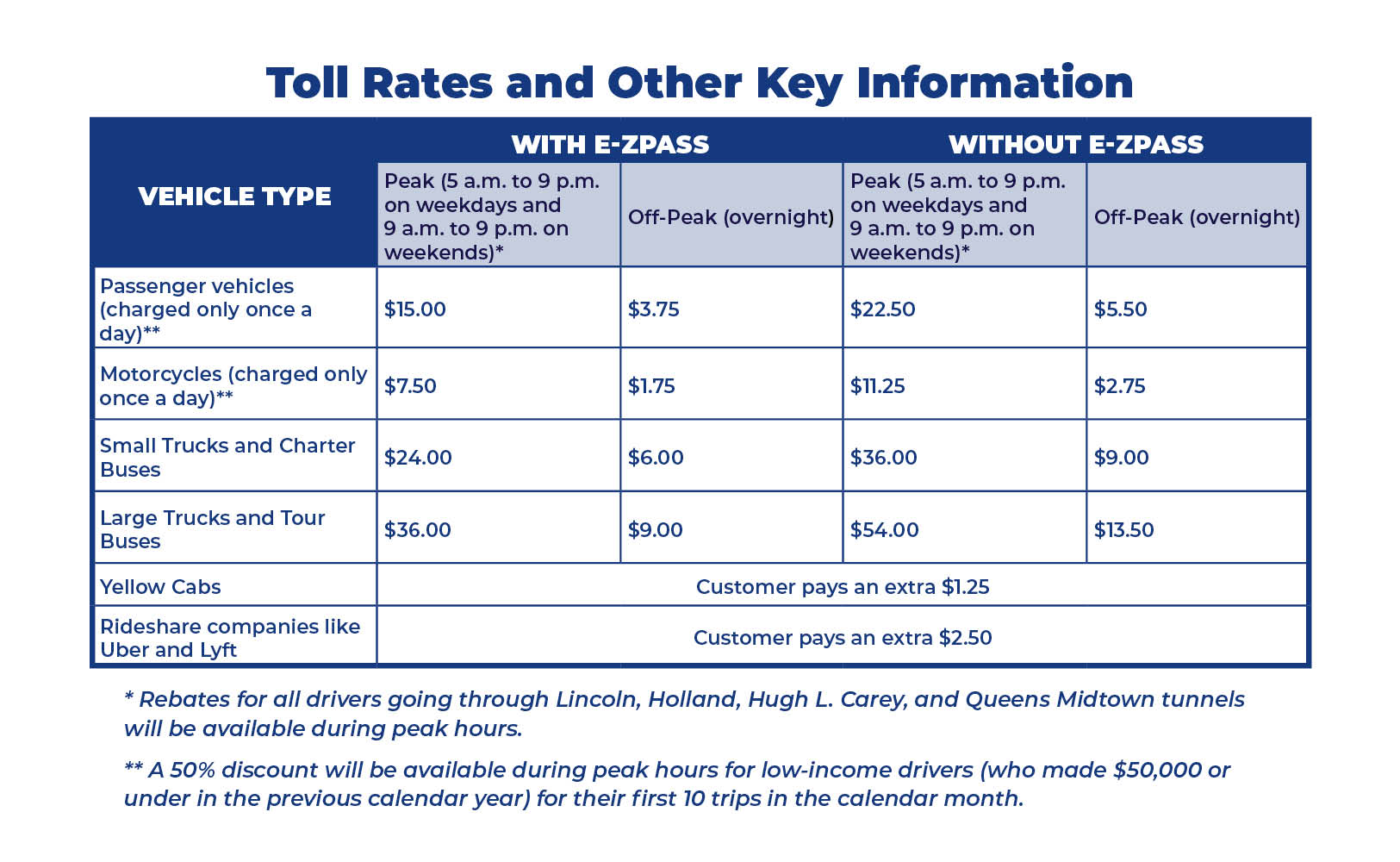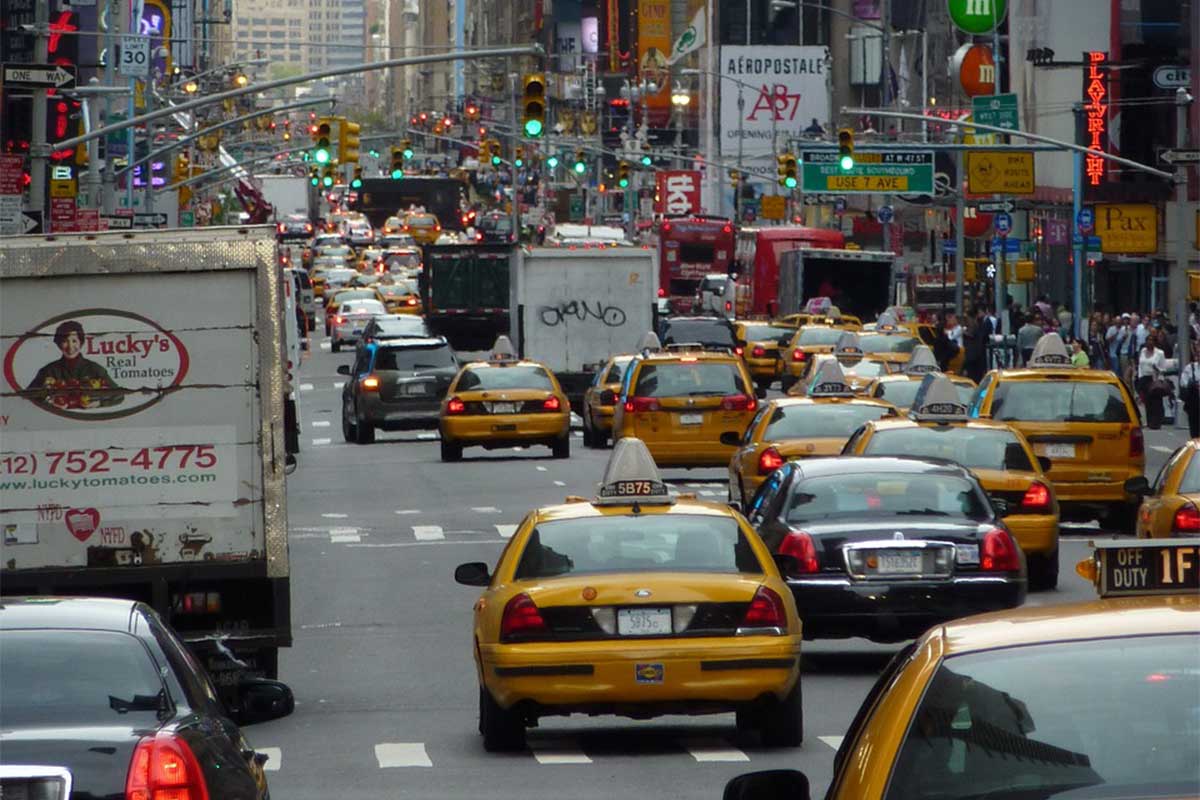Published June 26, 2024 at 9:30 AM
On June 5, 2024, Governor Hochul unilaterally decided to place an "indefinite pause” on congestion pricing, only a few weeks before it was supposed to go into effect, after years of planning and preparation. The Governor’s decision has massive ramifications for the city, especially for our transit system and the environment, heavily impacting New Yorkers in their daily lives and after years of planning and preparation.
What is Congestion Pricing?
Congestion pricing would impose a toll on vehicles entering the Central Businesses District (CBD), which is all of Manhattan below Central Park, excluding the FDR Drive, the West Side Highway, and Hugh L. Carey Tunnel.
Toll Rates and Other Key Information

- Passenger vehicles and motorcycles are charged once a day.
- Vehicles with E-ZPass pay $15 during peak hours (5 a.m. to 9 p.m. on weekdays and 9 a.m. to 9 p.m. on weekends) and those without pay $22.50. Off-peak hours cost $3.75 and $5.50 respectively.
- Motorcycles with E-ZPass pay $7.50 during peak hours and those without pay $11.25. Off-peak hours cost $1.75 and $2.75 respectively.
- Small Trucks and Charter Buses with E-ZPass pay $24 during peak hours, and those without pay $36. Off-peak hours cost $6 and $9 respectively.
- Large Trucks and Tour Buses with E-ZPass pay $36 during peak hours, and those without pay $54. Off-peak hours cost $9 and $13.50 respectively.
- For yellow cabs, the customer will pay a $1.25 surcharge. For rideshare services, the customer will pay a $2.50 surcharge.
- Rebates for all passenger cars and motorcycle drivers going through Lincoln, Holland, Hugh L. Carey, and Queens Midtown tunnels will be available during peak hours.
- A 50% discount will be available during peak hours for low-income drivers (who made $50,000 or under in the previous calendar year) for their first 10 trips in the calendar month.
Intended Benefits of Congestion Pricing
Congestion pricing has improved quality of life in other cities around the world, such as Stockholm, London, and Singapore, and could do the same in New York.
The program would generate $1 billion per year in revenue, which locks down $15 billion in bonds to fund the MTA’s 2020-2024 Capital Program. Some of the program’s projects included modernizing the system's more than 100 year-old signal network, adding electric buses, making stations more accessible, and beginning the next phase of the Second Avenue Subway.
More than 700,000 vehicles enter the CBD every weekday, leading to average speeds of just 7 mph. The MTA estimates that “New Yorkers lose 117 hours a year on average sitting in traffic, costing them nearly $2,000 in wasted time.” With congestion pricing in place, there would be an estimated 100,000 fewer vehicles entering the CBD daily, leading to less time wasted for drivers, and safer, quieter streets for pedestrians and cyclists. Importantly, with less traffic, emergency vehicles can also navigate the area more seamlessly.
Ultimately, the goal is to have a superb transit system which would lead people to rethink their decisions to drive and opt instead for public transit as often as possible thereby reducing traffic and pollution. With less overall drivers, congestion would not only be relieved in the CBD, but throughout the city.
Congestion pricing could also significantly lower carbon emissions, reduce pollution, and lead to overall cleaner air in the city. For example, the National Resources Defence Council (NRDC) reports that after implementing the policy in Stockholm, there was a significant decrease in asthma-related hospital visits for children. The NRDC adds that cleaner air from London’s program has added 1,888 years to the lives of their population. Having been proven in other cities, New York City should expect cleaner air, and thus, a healthier lifestyle.
In April 2023, the MTA published an Environmental Assessment (EA) on the program. It reported that some areas outside the CBD like the Bronx may see adverse effects, such as increases in traffic and pollution. However, the EA showed how revenue from congestion pricing would be used to mitigate some of these effects by investing in clean-air infrastructure, such as installing air filtration units in schools near highways, expanding parks and green spaces, and planting more trees and shrubs, especially near heavily congested roads. There is also a plan to establish an asthma center in the South Bronx, which has one of the highest asthma-related death rates in the country. The Federal Highway Administration (FHWA) subsequently evaluated and issued a Finding of No Significant Impact (FONSI). This means that the FHWA found adverse effects would either not be significant enough or can be mitigated below significant levels.
How Governor Hochul’s Actions Impact the Future of Our City
Congestion pricing was passed to create safer streets, reduce pollution, and improve public transit. Half a billion dollars has already gone into putting up cameras in the congestion zone. Now, the MTA is left scrambling for funding, with Chair Janno Lieber saying that the Capital Program’s budget will have to shrink to maintain the system’s day-to-day operations.
In response to the announcement, the Public Advocate said in a statement, “No version of congestion pricing was going to make everyone happy. No policy ever does. That doesn’t detract from the reasons it was developed – to reduce vehicle congestion, protect our environment, and improve our public transit infrastructure – causes which the governor has now put second to politics.”
Kashif Hussain, Deputy Public Advocate for Infrastructure & Environmental Justice, Neelan Martin, Infrastructure & Environmental Justice Intern, David Kahn and Sasha St. Juste, Infrastructure & Environmental Justice Community Organizers
Image Credit: Holger Stephan, Pixabay
Don't miss the latest from the Office of the Public Advocate. Subscribe to the Advocate Bulletin newsletter.
